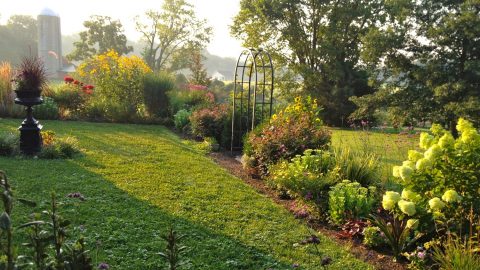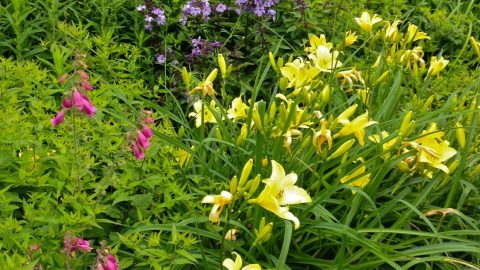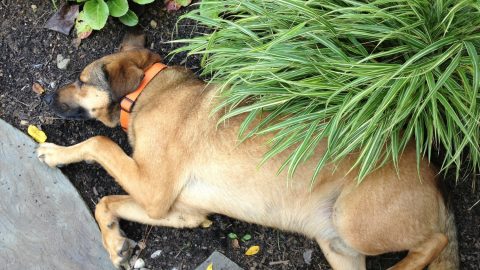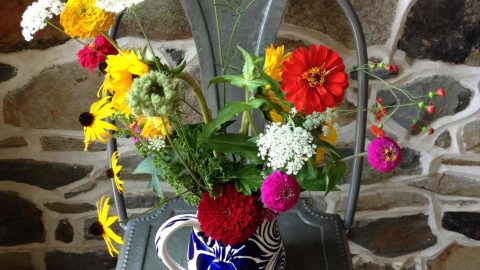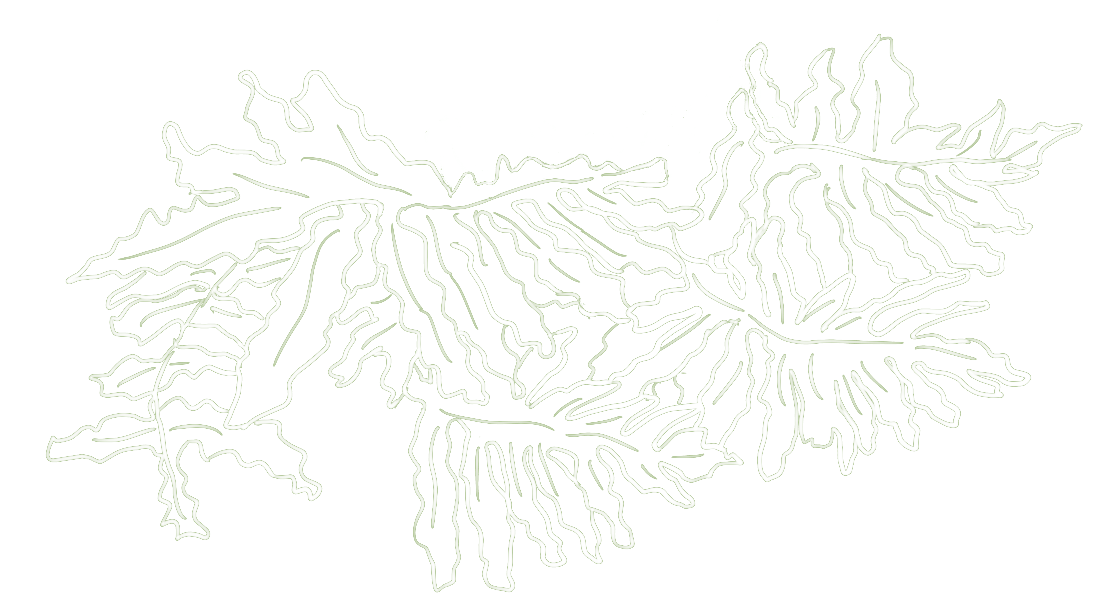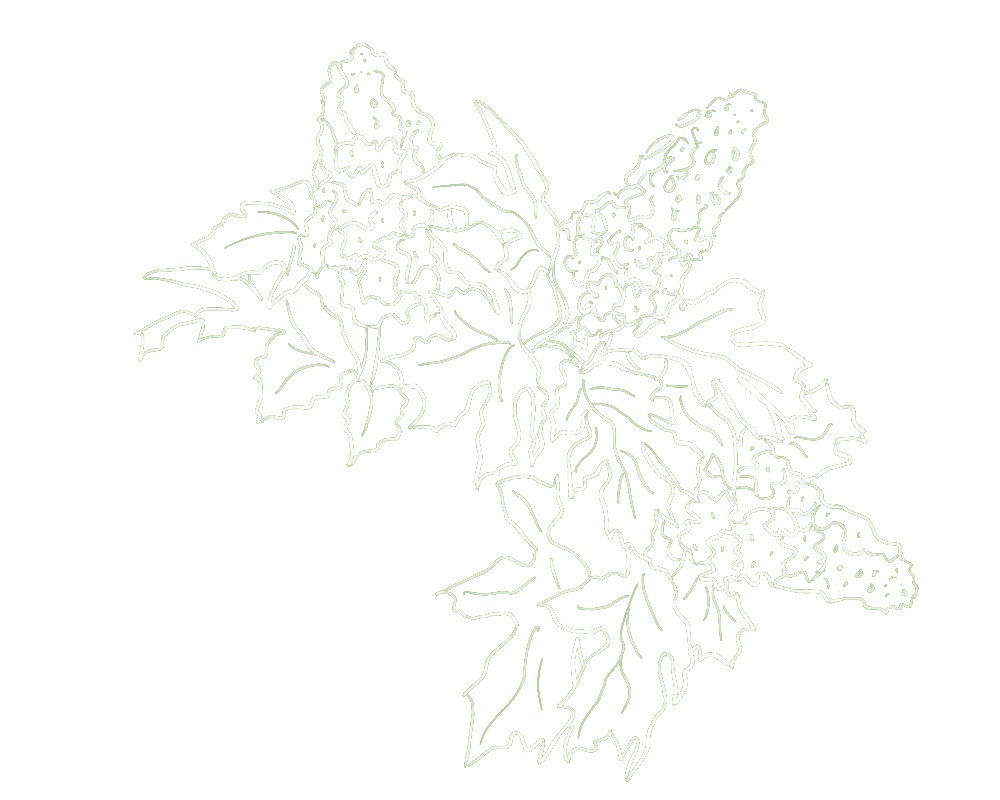In my efforts to find the “sweet spot” of creating personal garden spaces that engage but don’t overwhelm me, I’ve been experimenting with a series of fairly narrow mixed perennial beds (maximum depth of about 6 feet). As I noted in an earlier post, I’ve found that I can pack a surprising amount of visual punch in what initially seemed to be a pretty limited space.
Once I settled on the size and location of the beds and was ready to start picking plants to put in them, you might think I focused first on visual qualities: the color, structure, texture, etc. of a plant’s flowers, leaves and stems. I’ll admit, I had eye-candy plants and plant combinations dancing through my mind from the moment I decided to make the new beds. But I figured that for my high engagement/low maintenance approach to work, I needed to pay very close attention to how a plant grows below ground before including it in my planting scheme.
The significance of a plant’s root structure and how the plant develops and reproduces itself was lost on me for years. After all, who thinks about roots when admiring a beautiful or unusual plant that is beckoning to you in a catalog or nursery?
Yet I’ve come to appreciate that the below-ground stuff is every bit as important as the above-ground stuff when it comes to understanding how a particular plant will perform in the garden – and I’m not just talking about soil. Will a plant’s root structure and growth rate make it a little too joyful, causing it to obliterate its neighbors over the course of a growing season? Or (on the opposite end of the spectrum) will it just sit there and expand so slowly that I’m not sure whether it’s on its last legs or not?
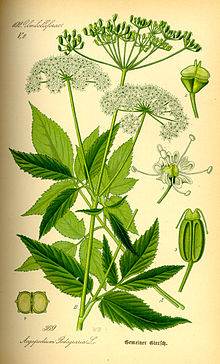
Bishop’s Weed
In the case of my narrow perennial beds, space is at a premium and I wanted to avoid the maintenance headache of constantly policing plants and removing those that would threaten both the design intent and the nearby lawn. So I decided to generally avoid overly athletic plants that spread quickly through above or below ground runners — especially those that love fertile clay soil like mine. (If you’ve ever spent hours on your hands and knees untangling the stringy white roots of Aegopodium podagraria ‘Variegatum’, Variegated Bishop’s Weed, from every other perennial in the bed, you know the kind of plant I’m talking about.)
I’ve made a few exceptions for some very low growing, ground covering plants that I’ve tucked around some of the larger plants to help knit everything together. But to a large extent, I’ve adopted the adage “The Lazier, The Better” when it comes to assessing the suitability of a plant’s root system for this particular part of my garden.
“Clumping” plants that spread outward at a reasonable rate from a defined cluster of roots are big winners in my book. True, over time, some clumping plants can die in the middle or flower less frequently and require periodic division to keep them looking their best. But digging up and splitting a perennial every 3-5 years is far less work than trying to keep an aggressive runner in bounds. And there are many, many attractive clumpers to choose from, ranging in size from the very small to the very large.
It’s also worth noting that a bed of clumpers, while pretty easy to maintain, can look quite formal and manicured. This is a big plus if that’s your preferred gardening style. Because I happen to like a more naturalistic aesthetic, I’ve also mixed in a good number of sprawlers and well-behaved self-seeders around the clumpers to keep the planting fairly loose and relaxed.
“No running in the garden” seems an obvious admonition when you think of kids playing ball nearby or rambunctious dogs chasing rambunctious rabbits. But I’ve found it’s also a good mantra to follow in perennial plantings when the design intent is big — and the available space is pretty small.
Photo credit: running home via photopin (license)
Illustration of Bishop’s Weed from Otto Wilhelm Thomé 1885. Flora von Deutschland, Österreich und der Schweiz
Tags: gardens for aging in place low maintenance gardening perennial gardening perennial root systems



